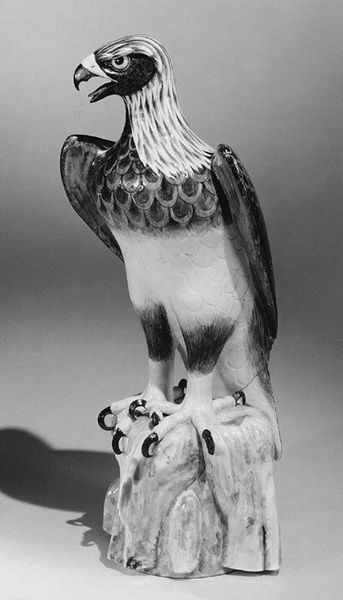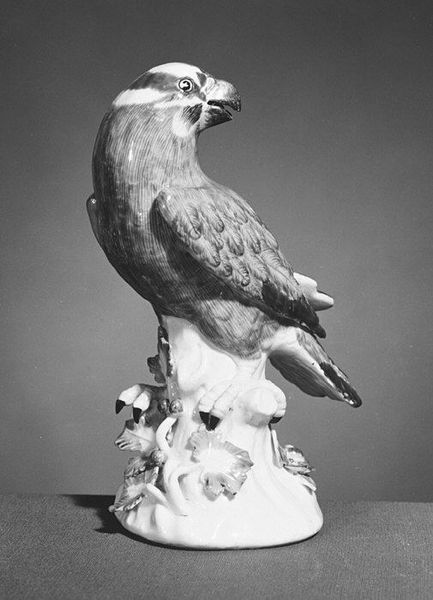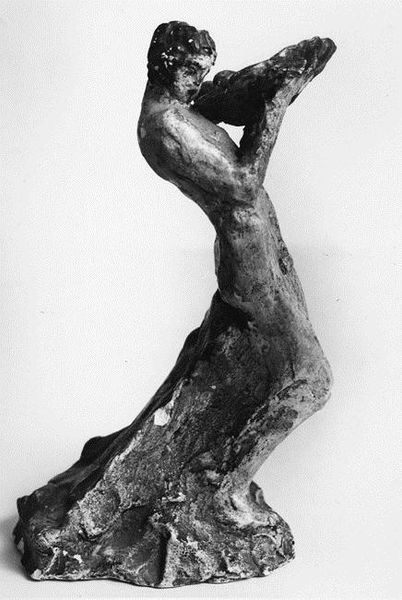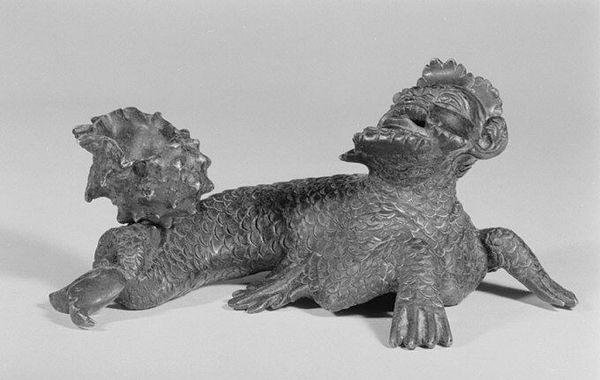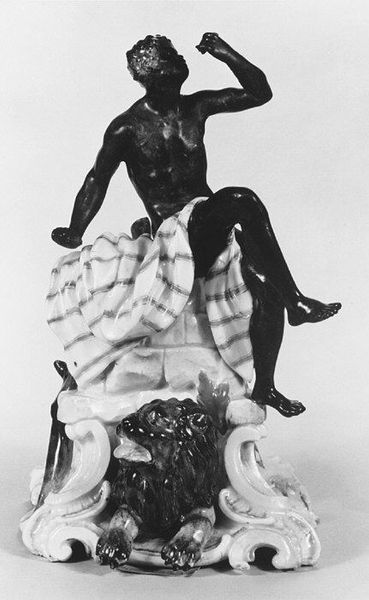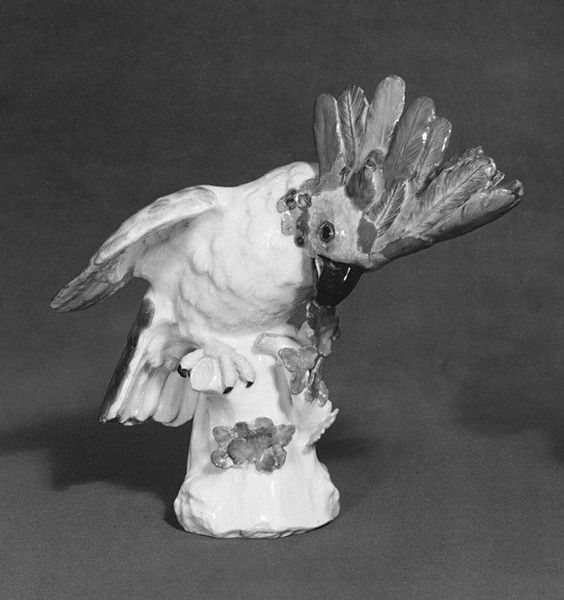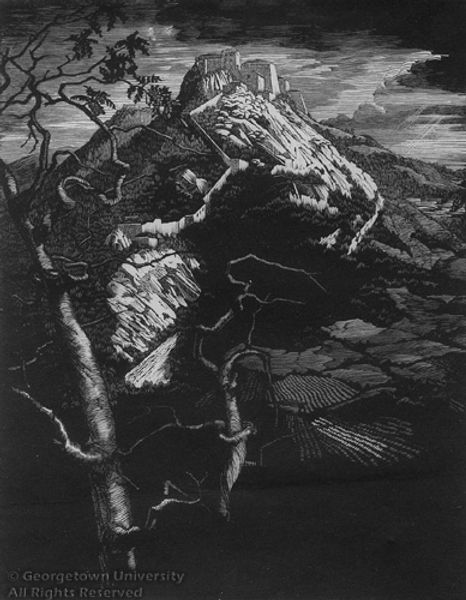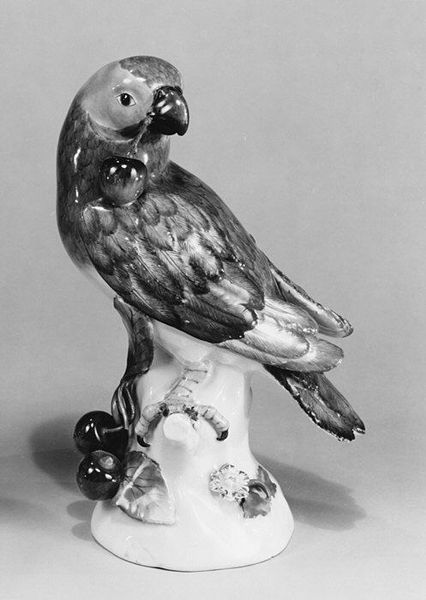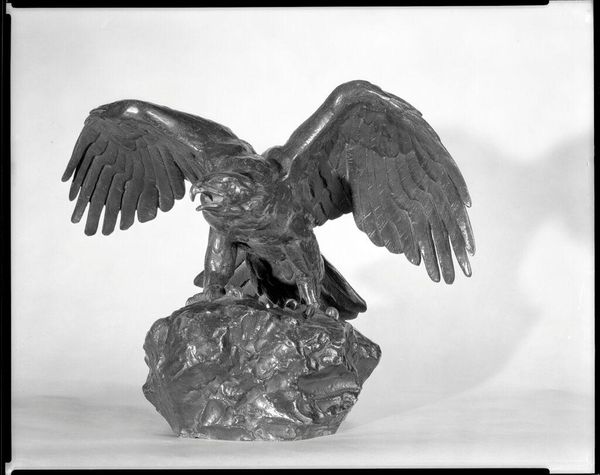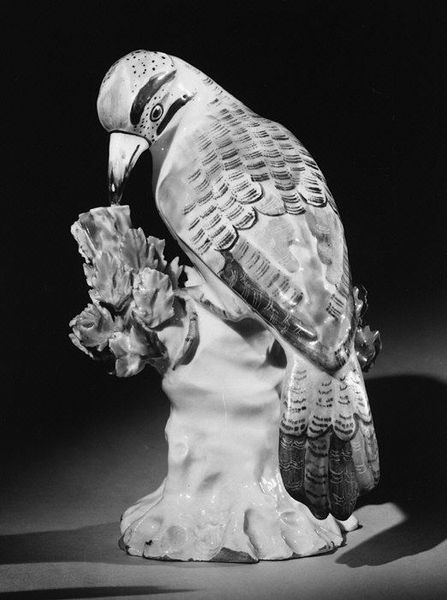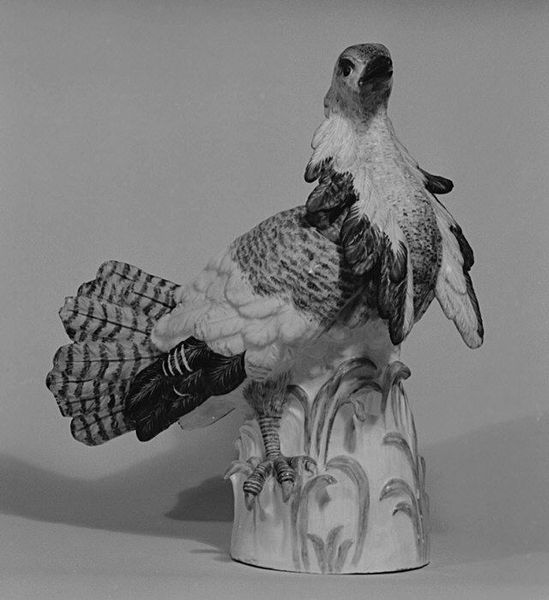
ceramic, earthenware, sculpture
#
surface detail
#
3d sculpting
#
sculpture
#
textured
#
ceramic
#
sculptural image
#
unrealistic statue
#
earthenware
#
close-up
#
sculpting
#
sculpture
#
decorative-art
#
rococo
#
close up
#
statue
Dimensions: Height: 8 in. (20.3 cm)
Copyright: Public Domain
Editor: Here we have an earthenware sculpture of an owl, dating back to between 1745 and 1765. I find its heavily textured surface quite striking. What compositional elements stand out to you? Curator: The Rococo style lends itself to an emphasis on decorative qualities. Observe the deliberate lack of symmetry. The owl’s form is roughly hewn. The potter seems more interested in the interplay of textures than in accurate representation. Editor: So, the essence lies more in the surface detail rather than a lifelike depiction? Curator: Precisely. Note how the applied glazes contribute to this effect. They cascade and pool, creating a sense of dynamism across the form. What is the overall effect? Editor: It does seem quite tactile. The way the glazes run almost gives it a sense of movement, despite it being a static object. Are you suggesting this movement is of a great relevance in a piece like this? Curator: I suggest the running of the glaze does not depict natural plumage, which encourages close visual examination of material qualities and the aesthetic value derived from it. The owl acts as a canvas for exploring surface textures and glaze techniques. How would this sculptural form speak to its historical era? Editor: I never considered approaching the subject from this direction. The visual emphasis really does tell a story. Curator: Indeed, it is the very language of art!
Comments
No comments
Be the first to comment and join the conversation on the ultimate creative platform.
